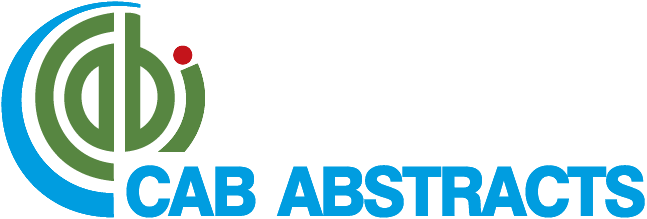Level of knowledge about anaphylactic shock in students of the Faculty of Dentistry, Interamerican Open University
DOI:
https://doi.org/10.62486/agodonto2023208Keywords:
shock, anaphylaxis, knowledge, students, dentistryAbstract
Introduction: Anaphylactic shock is a severe and unexpected allergic reaction that has a rapid onset and can even cause the death of the patient. Its rapid clinical diagnosis is of vital importance since it will involve the compromise of several important systems.
Objective: To determine the level of knowledge about anaphylactic shock and its dental management by 4th and 5th year students of the Universidad Abierta Interamericana, School of Dentistry.
Methods: A cross-sectional study was conducted using a 15-question survey. First, 4th year students were surveyed before they began the Clinical and Integrated Surgery of Adults and Geriatrics II course and then, 5th year students were surveyed during the break from the Oral and Maxillofacial Surgery and Traumatology course.
Results: The average general knowledge of 4th and 5th year students is low since error rates are greater than 50%. As for the first-choice medication, a high rate of incorrect answers was observed, since they did not know which one it was, but they did know the correct route of administration. As for knowledge of the university protocols, the results were poor.
Conclusions: most students are unaware of the existence of the university protocols for acting in cases of emergency, although on the other hand, in general, they are aware of the existence of the first aid kit to deal with emergencies.
References
Brown AF. Anaphylactic shock: mechanisms and treatment. Emergency Medicine Journal [Internet] 1995 [cited 2024 Sep 26];12(2):89–100. Disponible en: https://emj.bmj.com/content/12/2/89
Johnson RF, Peebles RS. Anaphylactic Shock: Pathophysiology, Recognition, and Treatment. Seminars in Respiratory and Critical Care Medicine [Internet] 2004 [cited 2024 Sep 26];25:695–703. Disponible en: https://www.thieme-connect.com/products/ejournals/abstract/10.1055/s-2004-860983
Barach EM, Nowak RM, Lee TG, Tomlanovich MC. Epinephrine for Treatment of Anaphylactic Shock. JAMA [Internet] 1984 [cited 2024 Sep 26];251(16):2118–2122. Disponible en: https://doi.org/10.1001/jama.1984.03340400046024
Espinoza DB. Nivel de conocimiento sobre shock anafiláctico en los estudiantes que llevan clínica del adulto en la Universidad Alas Peruanas filial Huacho periodo agosto - diciembre 2016 [Internet]. 2018 [cited 2024 Sep 25];Disponible en: https://repositorio.uap.edu.pe/xmlui/handle/20.500.12990/3432
Muraro A, Worm M, Alviani C, et al. EAACI guidelines: Anaphylaxis (2021 update). Allergy [Internet] 2022 [cited 2024 Sep 27];77(2):357–377. Disponible en: https://onlinelibrary.wiley.com/doi/abs/10.1111/all.15032
Zieliński M, Kominek M, Motylewski B, Skalski D. ANAPHYLAXIS AND ANAPHYLACTIC SHOCK. Rehabilitation and Recreation [Internet] 2019 [cited 2024 Sep 27];(5). Disponible en: https://health.nuwm.edu.ua/index.php/Rehabilitation/article/view/84
Sicherer SH, Simons FER, SECTION ON ALLERGY AND IMMUNOLOGY, et al. Epinephrine for First-aid Management of Anaphylaxis. Pediatrics [Internet] 2017 [cited 2024 Sep 27];139(3):e20164006. Disponible en: https://doi.org/10.1542/peds.2016-4006
Soar J, Pumphrey R, Cant A, et al. Emergency treatment of anaphylactic reactions—Guidelines for healthcare providers. Resuscitation [Internet] 2008 [cited 2024 Sep 27];77(2):157–169. Disponible en: https://www.sciencedirect.com/science/article/pii/S0300957208000701
Zarisfi F, Pek JH, Oh JHH, Loke JH, Lim SH. Singapore First Aid Guidelines 2021. Singapore Med J [Internet] 2021 [cited 2024 Sep 27];62(8):427–432. Disponible en: https://www.ncbi.nlm.nih.gov/pmc/articles/PMC8804485/
Dasta JF, Fath JJ, Cerra FB. The Therapy of Anaphylactic Shock. Drug Intelligence & Clinical Pharmacy [Internet] 1984 [cited 2024 Sep 27];18(1):14–21. Disponible en: https://doi.org/10.1177/106002808401800101
Kounis NG, Koniari I, Soufras GD, Chourdakis E. Anaphylactic shock with methylprednisolone, Kounis syndrome and hypersensitivity to corticosteroids: a clinical paradox. Ital J Pediatr [Internet] 2018 [cited 2024 Sep 27];44(1):143. Disponible en: https://doi.org/10.1186/s13052-018-0579-5
Choo KJL, Simons FER, Sheikh A. Glucocorticoids for the treatment of anaphylaxis. Evidence-Based Child Health: A Cochrane Review Journal [Internet] 2013 [cited 2024 Sep 27];8(4):1276–1294. Disponible en: https://onlinelibrary.wiley.com/doi/abs/10.1002/ebch.1925
Published
Issue
Section
License
Copyright (c) 2023 A (Author)

This work is licensed under a Creative Commons Attribution 4.0 International License.
The article is distributed under the Creative Commons Attribution 4.0 License. Unless otherwise stated, associated published material is distributed under the same licence.





